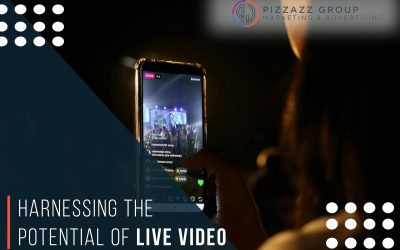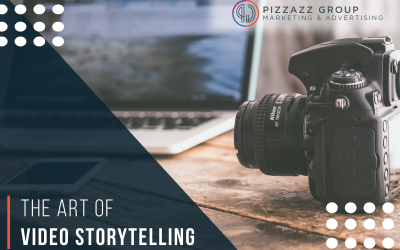
Understanding the Video Marketing Buyer Journey
Understanding the Video Marketing Buyer Journey

1. Awareness Stage: At this stage, consumers identify a problem or need they have and begin searching for information to understand it better. They are looking to educate themselves about potential solutions.
2. Consideration Stage: During this stage, consumers have defined their problem or need and are actively evaluating different solutions or approaches. They are comparing options and considering which ones best fit their requirements.
3. Decision Stage: In the final stage, consumers have decided on a solution or product and are ready to make a purchase. They may be comparing specific brands or vendors to finalize their decision.
Content for Each Stage of the Video Marketing Buyer Journey
1. Awareness Stage
During the awareness stage, your goal is to attract and educate your target audience about their challenges and introduce your brand as a potential solution. Key types of video content for this stage include:
• Educational Videos: Create videos that address common pain points, challenges, or questions your audience may have. For example, tutorials, how-to guides, or explainer videos that demonstrate your expertise.
• Brand Storytelling: Share your brand’s story, mission, values, and unique selling propositions (USPs) through compelling narratives that resonate with your audience’s interests and aspirations.
• Thought Leadership Content: Position your brand as an industry leader by sharing insights, trends, and expert opinions through interviews, panel discussions, or thought-provoking content.
Example: A software company targeting small businesses could create an educational video series explaining common accounting challenges and how their software simplifies financial management.
2. Consideration Stage
In the consideration stage, consumers are evaluating different solutions and exploring specific products or services. Your video content should provide detailed information, address objections, and differentiate your offerings:
• Product Demonstrations: Showcase your products or services in action, highlighting key features, benefits, and use cases to help viewers understand how they work.
• Comparison Videos: Create side-by-side comparisons with competitors or alternative solutions to help prospects evaluate their options and make informed decisions.
• Customer Testimonials: Share success stories, case studies, or testimonials from satisfied customers to build credibility and demonstrate real-world results.
Example: An e-commerce retailer could create product demonstration videos showcasing the functionality, durability, and unique features of their latest line of outdoor gear.
3. Decision Stage Video Marketing Buyer Journey
At the decision stage, consumers are ready to make a purchase and need reassurance that they are making the right choice. Your video content should focus on building trust, addressing final concerns, and encouraging action:
• FAQ and Support Videos: Answer common questions, address objections, and provide reassurance through detailed explanations and customer support resources.
• Limited-Time Offers: Create urgency with promotional videos highlighting special offers, discounts, or exclusive deals to incentivize immediate action.
• Personalized Messages: Send personalized video messages or testimonials directly to prospects to nurture relationships and close deals.
Example: A software-as-a-service (SaaS) company could create personalized demo videos tailored to specific customer pain points, showcasing how their platform addresses each one effectively.
Best Practices for Creating Effective Video Content
1. Know Your Audience: Tailor your video content to resonate with the interests, preferences, and needs of your target audience at each stage of their journey.
2. Maintain Consistency: Ensure consistency in messaging, branding, and tone across all stages to reinforce your brand identity and build trust.
3. Optimize for Each Platform: Adapt video formats, lengths, and styles to suit the platform preferences and viewing habits of your target audience (e.g., YouTube, LinkedIn, Instagram).
4. Include Clear CTAs: Encourage viewers to take the next step by including clear calls to action (CTAs) that prompt them to visit your website, download a guide, or contact your sales team.
5. Measure and Iterate: Use analytics tools to track video performance metrics, gather audience feedback, and iterate on content strategies to optimize engagement and conversions.
Integrating Video Marketing into Your Strategy
• Content Mapping: Map out video content ideas and formats for each stage of the buyer’s journey, ensuring seamless progression and alignment with customer needs.
• Distribution Strategy: Plan how and where you will distribute your videos to reach your target audience effectively. Utilize email marketing, social media, website placements, and paid advertising channels.
• Nurture Leads: Implement lead nurturing workflows that use video content to educate, inform, and engage prospects as they move through the sales funnel.
• Continuous Optimization: Regularly review and optimize your video marketing efforts based on performance data, audience feedback, and industry trends to stay competitive and relevant.
Conclusion
For more information on Video Marketing, contact Pizzazz Group at customer@pizzazzgroup.com or by calling (614) 350-1681.
Related Video Marketing Blogs
Creating Compelling Video Content: Tips and Best Practices
Whether you're promoting a brand, educating your audience, or simply sharing your creativity, creating compelling video content is key to standing out in a crowded online landscape. This comprehensive guide explores essential tips, best practices, and strategies to...
Harnessing the Potential of Live Video: Strategies for Successful Live Video Streaming
Live video streaming has emerged as a powerful tool for businesses, influencers, and content creators to engage with their audiences in real-time. Platforms like Facebook Live, Instagram Live, YouTube Live, and Twitch have democratized broadcasting, allowing anyone...
The Art of Video Storytelling
Video storytelling transcends traditional marketing tactics by capturing emotions, conveying messages, and building connections with viewers in a compelling and memorable way. Whether you're aiming to educate, entertain, inspire, or promote, effective video...





